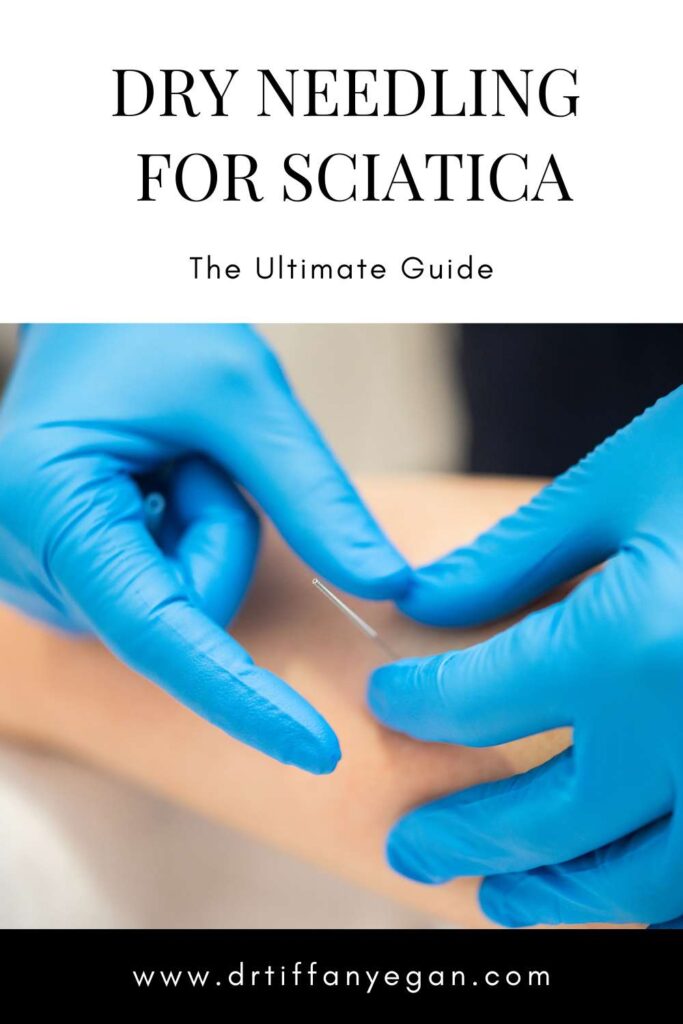The Ultimate Guide to Dry Needling for Sciatica
Last Updated on May 19, 2023 by Dr. Tiffany Egan
As someone who has experienced the sharp, shooting pain of sciatica, I know just how debilitating it can be. Whether it’s caused by a herniated disc, spinal stenosis, or pregnancy and postpartum, sciatica can make even the simplest activities – like sitting or walking – feel impossible. That’s why I turned to dry needling for sciatica relief. In this guide, I’ll share everything you need to know about this innovative treatment and how it can help you get back on your feet.
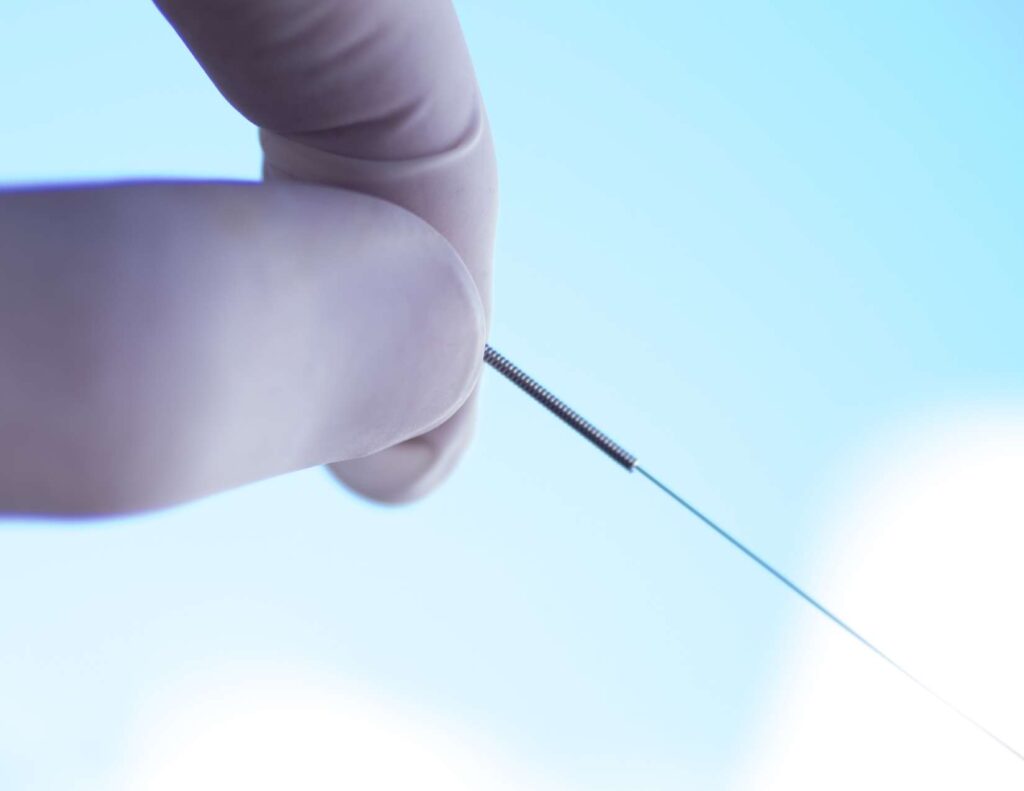
Table of Contents
Understanding Sciatica and its Causes
Sciatica is a common condition that affects millions of people worldwide. It occurs when the sciatic nerve – the largest nerve in the body – becomes compressed or irritated. The result is pain, numbness, and tingling that radiates down the buttock and leg. Sciatica can be caused by a variety of factors, including:
- Herniated disc
- Spinal stenosis
- Degenerative disc disease
- Spondylolisthesis
- Pregnancy & Postpartum Sciatica
- Obesity
- Prolonged sitting or standing
If you’re experiencing sciatica symptoms, it’s important to seek medical attention to determine the underlying cause and develop an appropriate treatment plan.
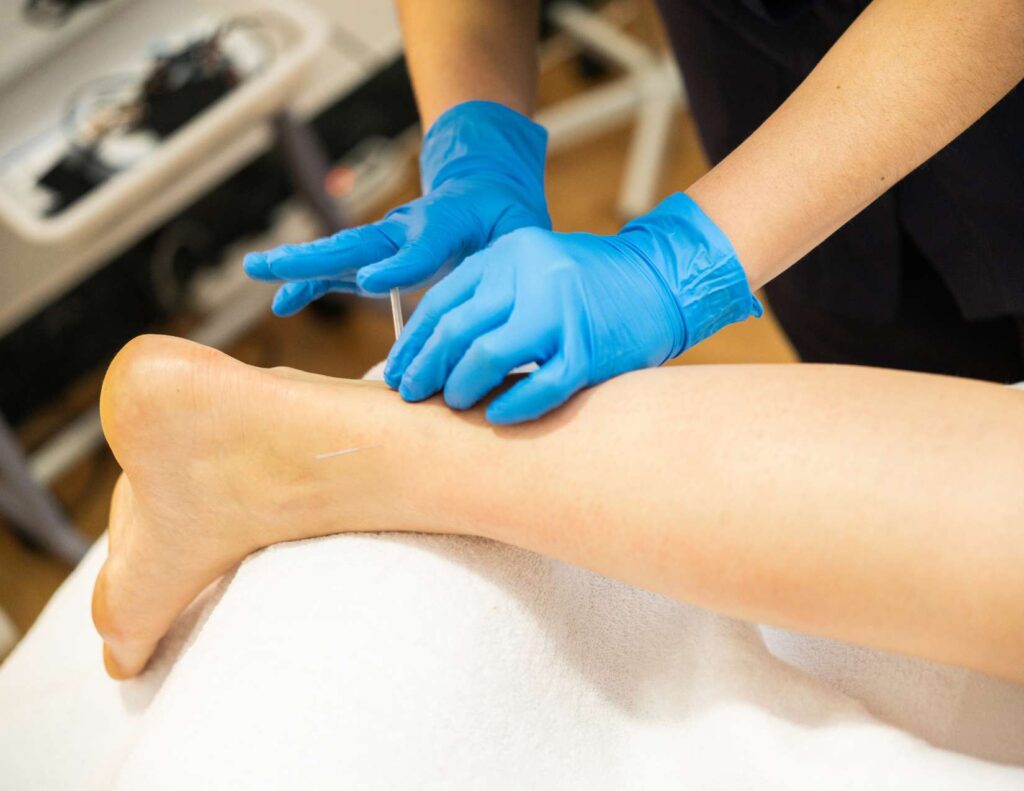
What is Dry Needling?
Dry needling is a technique used by physical therapists and other healthcare providers to treat a variety of musculoskeletal conditions, including sciatica. It involves inserting thin needles into trigger points – knots of tight muscle fibers – to release tension and improve blood flow. Unlike acupuncture, which is based on traditional Chinese medicine, dry needling is rooted in Western medicine and focuses on the anatomy and physiology of the body.
Does Dry Needling Work on Sciatica?
During a dry needling session, the practitioner will locate the trigger points in the affected area using palpation and other techniques. They will then insert the needles, which may cause a brief, sharp sensation. The needles will remain in place for several minutes, during which time the practitioner may manipulate them to enhance their effects. Most people find the experience to be relatively painless, and many report feeling immediate relief from sciatica pain.
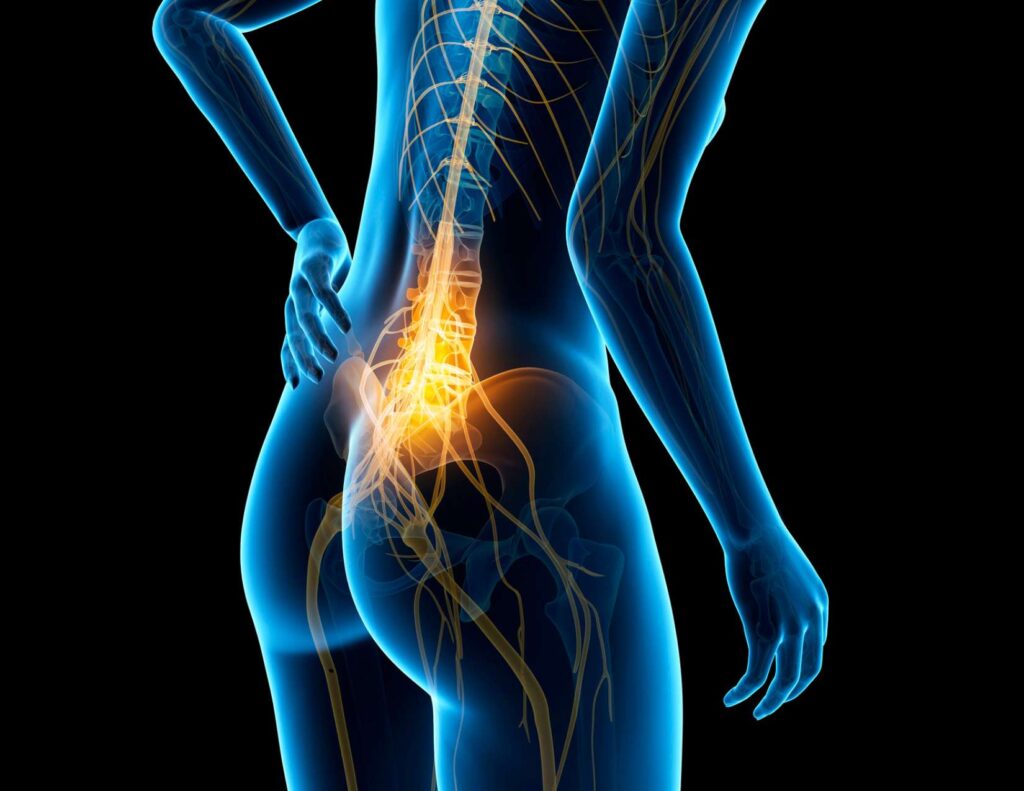
The Benefits of Dry Needling for Sciatica
Dry needling for sciatica has several benefits for sufferers. First and foremost, it can help to relieve pain and other symptoms by releasing tension in the affected muscles. Additionally, dry needling can improve circulation, reduce inflammation, and promote healing. Unlike medications or other treatments, dry needling has no known side effects, making it a safe and effective option for many people.
Another benefit of dry needling is that it can be used in combination with other treatments to enhance their effects. For example, a physical therapist may use dry needling in conjunction with exercises and stretches for sciatica to improve flexibility and range of motion.
The Dry Needling Process for Sciatica Relief
If you’re considering dry needling for sciatica relief, it’s important to understand what to expect during the process. Here’s a step-by-step guide:
- Consultation: Your practitioner will begin by reviewing your medical history and discussing your symptoms to determine if dry needling is right for you.
- Assessment: Your practitioner will assess your range of motion, muscle tone, and trigger points to develop a personalized treatment plan.
- Needle insertion: Your practitioner will insert the needles into the trigger points, which may cause a brief, sharp sensation.
- Manipulation: Your practitioner may manipulate the needles to enhance their effects.
- Needle removal: After several minutes, your practitioner will remove the needles, and you will be free to go about your day.
Preparing for Your Dry Needling Session
To get the most out of your dry needling session, there are a few things you can do to prepare. First, wear loose, comfortable clothing that allows easy access to the affected area. Second, be sure to eat a light meal beforehand to avoid lightheadedness or dizziness. Finally, be prepared to discuss your symptoms and medical history in detail with your practitioner.
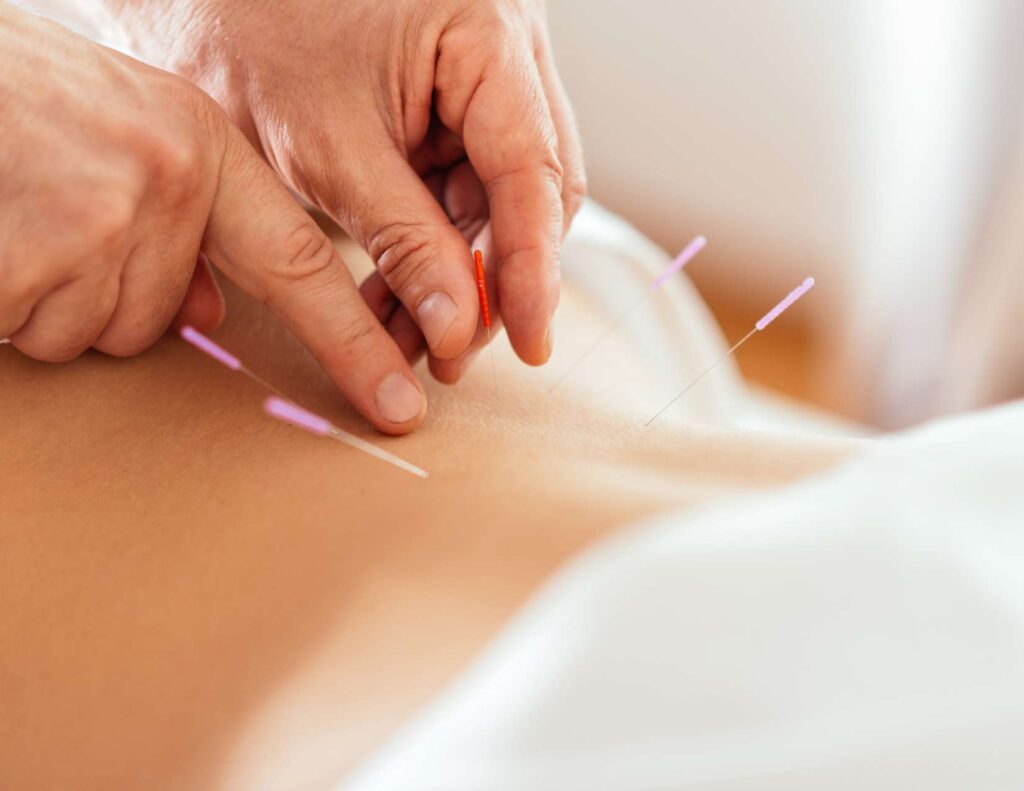
Post-Treatment Care and Recovery
After your dry needling session, it’s important to take care of yourself to ensure a smooth recovery. Your practitioner may recommend:
- Resting for the remainder of the day
- Applying ice or heat to the affected area
- Drinking plenty of fluids
- Avoiding strenuous activity for a few days
Most people experience immediate relief from sciatica symptoms after dry needling, but it may take a few days to fully recover. Be sure to follow your practitioner’s instructions and contact them if you experience any unusual symptoms.
Why is my Sciatica Worse After Dry Needling?
It is possible that sciatica symptoms may worsen after dry needling. This could be due to a variety of factors, including the intensity of the needling and any underlying medical conditions or physical issues that could be exacerbated by the treatment. If you are experiencing increased pain or discomfort in your lower back, buttocks, legs, or feet after undergoing dry needling, you should consult with your doctor or physical therapist to determine the cause and appropriate action.
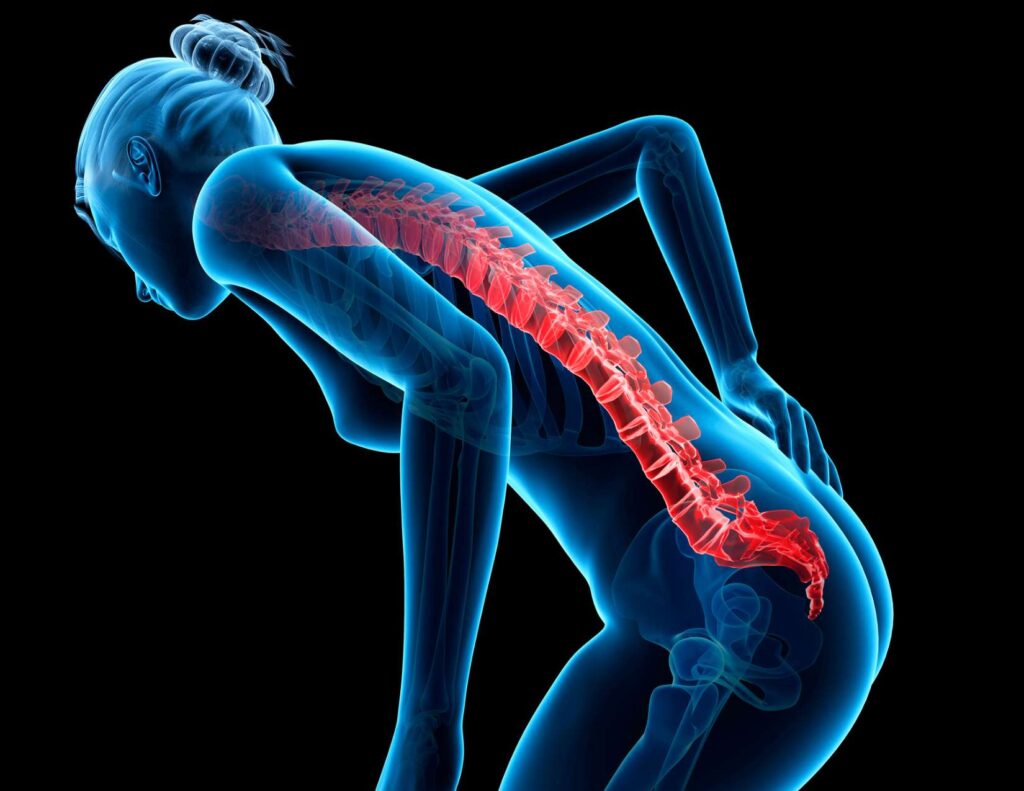
Common Misconceptions about Dry Needling for Sciatica
Despite its many benefits, dry needling is still relatively unknown and misunderstood by many people. Here are a few common misconceptions:
- Dry needling is the same as acupuncture: While both treatments involve needles, dry needling is based on Western medicine and focuses on the anatomy and physiology of the body.
- Dry needling is painful: While you may feel a brief, sharp sensation during needle insertion, most people find dry needling to be relatively painless.
- Dry needling is unsafe: Dry needling is a safe and effective treatment option for many people, and has no known side effects.
Who can Benefit from Dry Needling for Sciatica?
Dry needling can be a beneficial treatment option for anyone experiencing sciatica symptoms. However, it may be particularly helpful for those who:
- Have tried other treatments without success
- Are looking for a non-invasive, drug-free option
- Want to enhance the effects of other treatments, such as physical therapy or chiropractic care
Before beginning dry needling for sciatica, it’s important to consult with a qualified practitioner to determine if it’s right for you.

How to Find a Qualified Dry Needling Practitioner
To ensure the best possible outcome, it’s important to find a qualified dry needling practitioner. Here are a few tips:
- Look for a practitioner with specialized training in dry needling.
- Check their credentials and experience.
- Read reviews and ask for referrals from friends or healthcare providers.
- Ask for a consultation to discuss your symptoms and treatment options.
Other Treatments for Sciatica Relief
While dry needling for sciatica can be an effective treatment option, it’s not the only one. Other treatments that may help to relieve symptoms include:
- Physical therapy
- Chiropractic care
- Massage therapy
- Acupuncture
- Medications, such as anti-inflammatories or muscle relaxants
Your healthcare provider can help you determine the best treatment plan for your individual needs.
Conclusion: Is Dry Needling Good for Sciatica?
If you’re experiencing sciatica symptoms, dry needling may be a safe and effective treatment option to relieve pain and promote healing. By working with a qualified practitioner, you can develop a personalized treatment plan that addresses your unique needs and goals. Whether used alone or in combination with other treatments, dry needling can help you get back to the activities you love and live a pain-free life!
